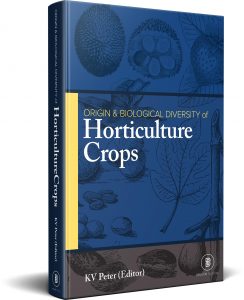Charles Darwin published on 24 November 1859 the classical paper “On the origin of species by means of natural selection, or the preservation of favoured races in the struggle for life”. This paper led to foundation of evolutionary biology. The Russian Scientist Nikolai Vavilov in 1924 conceptualized “A centre of origin or centre of diversity”. Above publications created awareness about the wealth of plants for food, nutrition, energy and environment. Biological diversity became the focal point to establish Research Councils, Research Institutes, Protected Forests, National and State Parks, Botanical Gardens and a good number of Academic Societies and journals. The United Nations convened a convention of parties and India contributed 5 reports to the convention on biological diversity. Indian Parliament passed several bills which later became acts-Biological Diversity Act-2002 and Protection of Plant Varieties and Farmers Right Act-2001-. The book “Origin and Biological Diversity of Horticultural Crops” carries 20 chapters dealing with fruits, vegetables, ornamentals and bamboo contributed by 47 scientists from 17 Research Institutes/Universities. The first chapter “The threats and Prospects of Biodiversity Conservation and Management in India “by the Former Chairman Protection of Plant Varieties and Farmers Right Act provides details on emerging threats to biological diversity and future prospects.
1. Threats and Prospects of Biodiversity Conservation and Management in India
2. Annonaceous Fruits
3. Ber
4. Carambola
5. Chironji (Buchanania lanzan Spreng.)
6. Guava
7. Litchi
8. Pomegranate
9. Minor Fruits
10. Fruits in Satpura Hills of Madhya Pradesh
11. Sapindaceous Fruits
12. Cabbages
13. Cucurbits in Hot Arid Region
14. Oriental Pickling Melon
15. Ridge Gourd
16. Celosia
17. Chrysanthemum
18. Lilies
19. Underutilized Ornamentals
20. Bamboo


